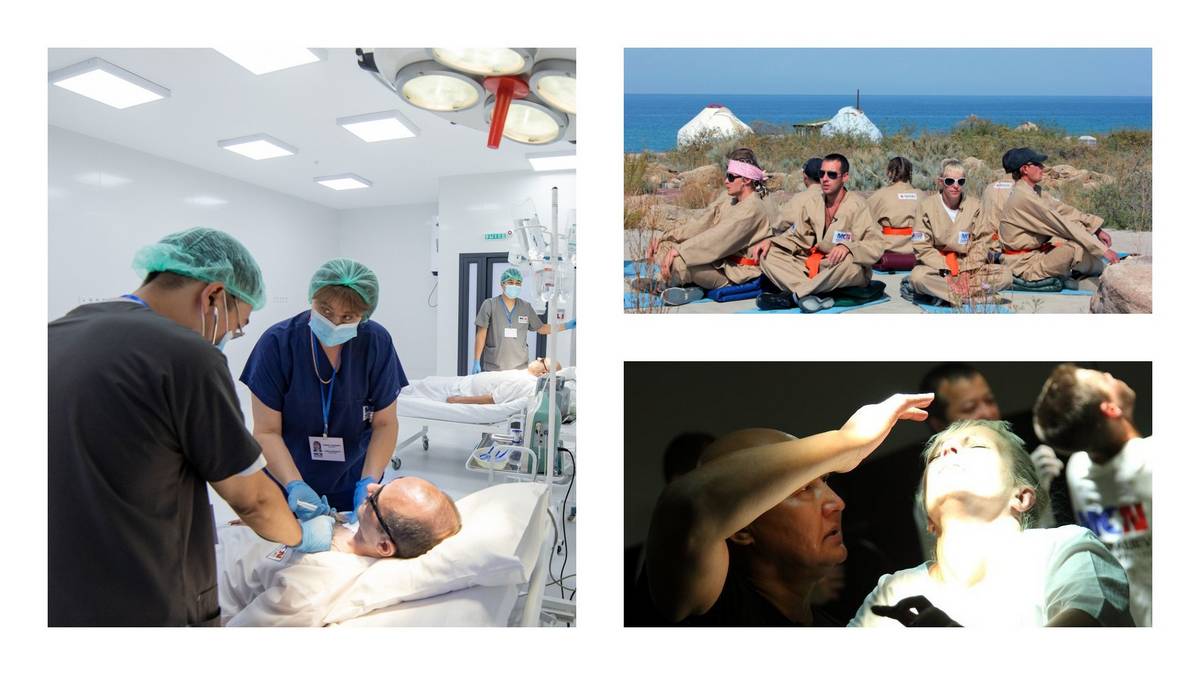Every year, around 15 million people in the world are diagnosed with mental disorders resulted from excessive alcohol abuse. People between 30 and 60 years of age suffer alcohol addiction, where the third part is women. (World Health Organization)

As a rule, they all have one story: a few years before the diagnosis, they crossed the red line of moderate alcohol consumption and began to drink more than 14 liters per year, which is considered the norm for developed countries. As a result, they all need alcoholism treatment in specialized alcohol addiction treatment center. Below, we describe most popular procedures of alcoholism treatment along with advantages and disadvantages of the given method.
1.Detoxification or Detox is a complex of procedures for removing toxic substances from the body of a dependent person, which is used at the beginning of alcoholism treatment.
The bottom line: a healthy human body is able to remove toxic substances naturally. Liver, kidneys, intestines, skin and immune system cope with the task. For most of the patients who require alcoholism treatment, the normal work of these organs is often disrupted by a long period of intoxication, therefore; most of them require additional medical help during detox therapy.
Key procedures of this method during alcoholism treatment:
• blood purification (hemosorption, hemodialysis, plasmapheresis)
• deactivation, neutralization and oxidation of substances using antidotes, sorbents and antioxidants
• vaccination, the introduction of blood serum
Effect: acute withdrawal symptoms and physical cravings are removed, the body is cleansed and restored.
Disadvantage: detox does not affect psychological, behavioural and social basis of addiction.
Conclusion: detox does not solve the problem of addiction in the long run and can only be a good complement to psychological therapy during alcoholism treatment.
2. Alcoholism treatment with drugs, medication – assumes the use of subcutaneous implantation of drugs which suppress and interfere with the use of alcohol in the future. Two drugs are used during this method:
• disulfiram
• naltrexone
The bottom line: after alcohol enters the body, the drugs inserted into the patient earlier, enter into chemical reaction with ethyl alcohol. As a result, instead of feeling euphoria, person's health sharply worsens; vomiting, arrhythmia, convulsions and pain are observed. Alcoholism treatment duration by this method is 3 to 6 months. In most cases, it is required to take drugs daily or in accordance with individual alcoholism treatment scheme prescribed by the doctor.
Effect: according to some studies, such alcoholism treatment method is no better than placebo (a substance that has no therapeutic effect). However, it can be an incentive to quit alcohol.

Disadvantages: drug treatment cannot be prescribed if there are signs of withdrawal symptoms. Therefore, it is suitable only for those who have for some time refrained from alcohol. Also, this alcoholism treatment method is not suitable to patients with hepatitis, kidney disease and diabetes.
Conclusion: this alcoholism treatment method does not eliminate psychological or physical causes of alcoholism. It establishes an artificial barrier for consumption, which can easily be dispensed by patient's refusal to continue alcoholism treatment.
3. Hypnosis - methods of suggestive therapy and shock effects on a person in order to inspire with an aversion to alcohol.
The bottom line: the hypnologist conducts an individual session with the patient, lays negative attitude towards alcohol. Before any hypnotic session, a personal conversation with doctor is conducted.
According to some doctors, hypnosis is intimidation of a dependent person and trauma to his psyche. Thus, according to the guidelines given under hypnosis, the smell of alcohol should cause vomiting in patients, and the use of drugs should give rise to fear of instant death.
Efficiency: for the 30 years of practice, the professional community of narcologists has not developed scientifically sound data confirming the effectiveness of alcoholism treatment solely with hypnosis and suggestive therapy.
Disadvantages: most addicted people cannot refrain from drinking alcohol and taking drugs before coding. By agreeing to hypnosis, they do not make volitional efforts to recover and rely entirely on medical "magic."
Conclusion: hypnosis and coding do not solve the underlying problems of alcoholism, are not evidence-based medicine methods and cannot guarantee a person's recovery in the long run.
4. 12 steps is the program of the American Alcoholics Anonymous Society, developed during the Great Depression in the USA, which fundamentally believes that alcoholism treatment is impossible.

The bottom line: a group of people on condition of anonymity gathers in a circle to recognize and discuss the problem of their own dependence. From each participant in the meeting is expected:
• sincere recognition
• appeal to a higher power that should help with recovery
• compensation for damage caused to others while being dependent from alcohol
Work in a group (often under the guidance of a professional psychotherapist) is aimed at "spiritual reorientation" of the patient, and not at alcoholism treatment.
Efficiency: The 12-step program has no scientific basis. According to some reports, no more than 5% of participants recover in anonymous groups.
Disadvantages: Despite the fact that the 12-step program is not positioned as Christian, it is based on the principles of Christianity: faith in God, conscious help to others, compulsory donations. For many, this may be incompatible with their faith and religious beliefs. For others, faith cannot be a substitute for medical alcoholism treatment.
Conclusion: the program may help in psychological overcoming of dependence. It serves as an instrument of socialization and adaptation of patients, but does not eliminate physical dependence. Therefore, this program is not able to replace full alcoholism treatment and rehabilitation of the patient.
5. Nazaraliev’s method - the author’s methodology for alcoholism treatment which professor practices in his Medical Center.

The bottom line: Nazaraliev’s method is a complex of medical, physiological and psychotherapeutic procedures. Alcoholism treatment at Nazaraliev’s clinic consists of:
• Detox
• Medically induced comas
• Cognitive-behavioral and psychological correction
• Body and soul healing program ‘Mindcrafting’
• Learning self-control practices
• Suggestive coding (psychotherapy session)
• Techniques for spiritual strengthening and reorientation
• Pilgrimage
• Fellowship with spiritual mentor
All these procedures and practices are divided into three stages. Duration for alcoholism treatment at Nazaraliev’s Centre is 15-20 days. Patient stays on premises of the clinic at all times during alcoholism treatment process.
Effectiveness: in 2011, the Russian Academy of Medical Sciences and the National Scientific Center for Narcology at the Ministry of Health and Social Development of the Russian Federation examined the treatment of alcoholism and evaluated its effectiveness as follows - 87.5% of the patients from the control group did not return to alcohol within one year after completing alcoholism treatment program.
Disadvantage: the method is not replicated and is used in one clinic only- Medical Center of Dr. Nazaraliev. Since mid-20th century, medical comas have been used only in exceptional cases in the United States. Today, they are still criticized by the Western medicine if used during alcoholism treatment.
Conclusion: Nazaraliev’s method incorporates various methods for alcoholism treatment and achieves high efficiency of 87.5% yearly remission due to an integrated approach.